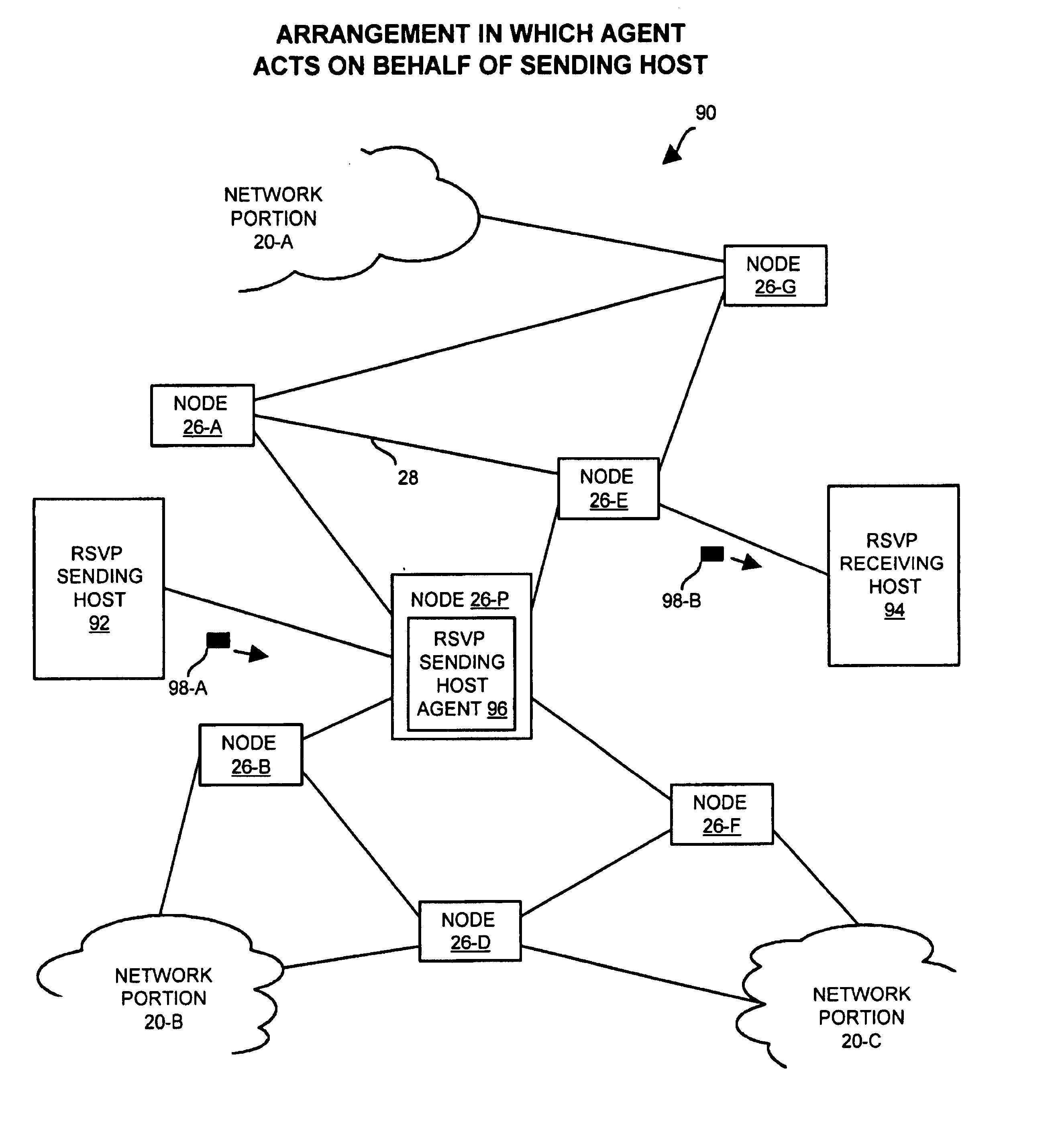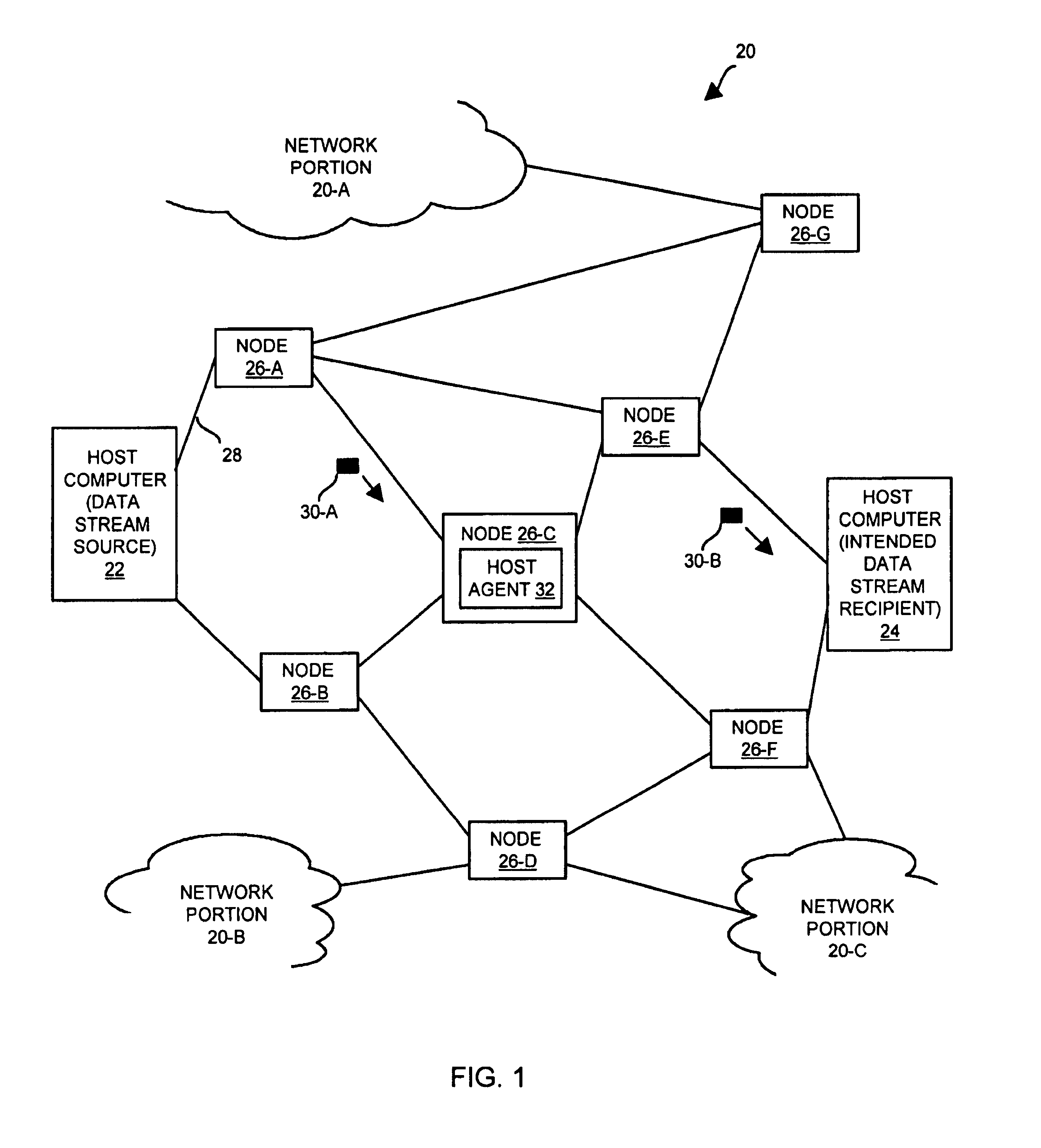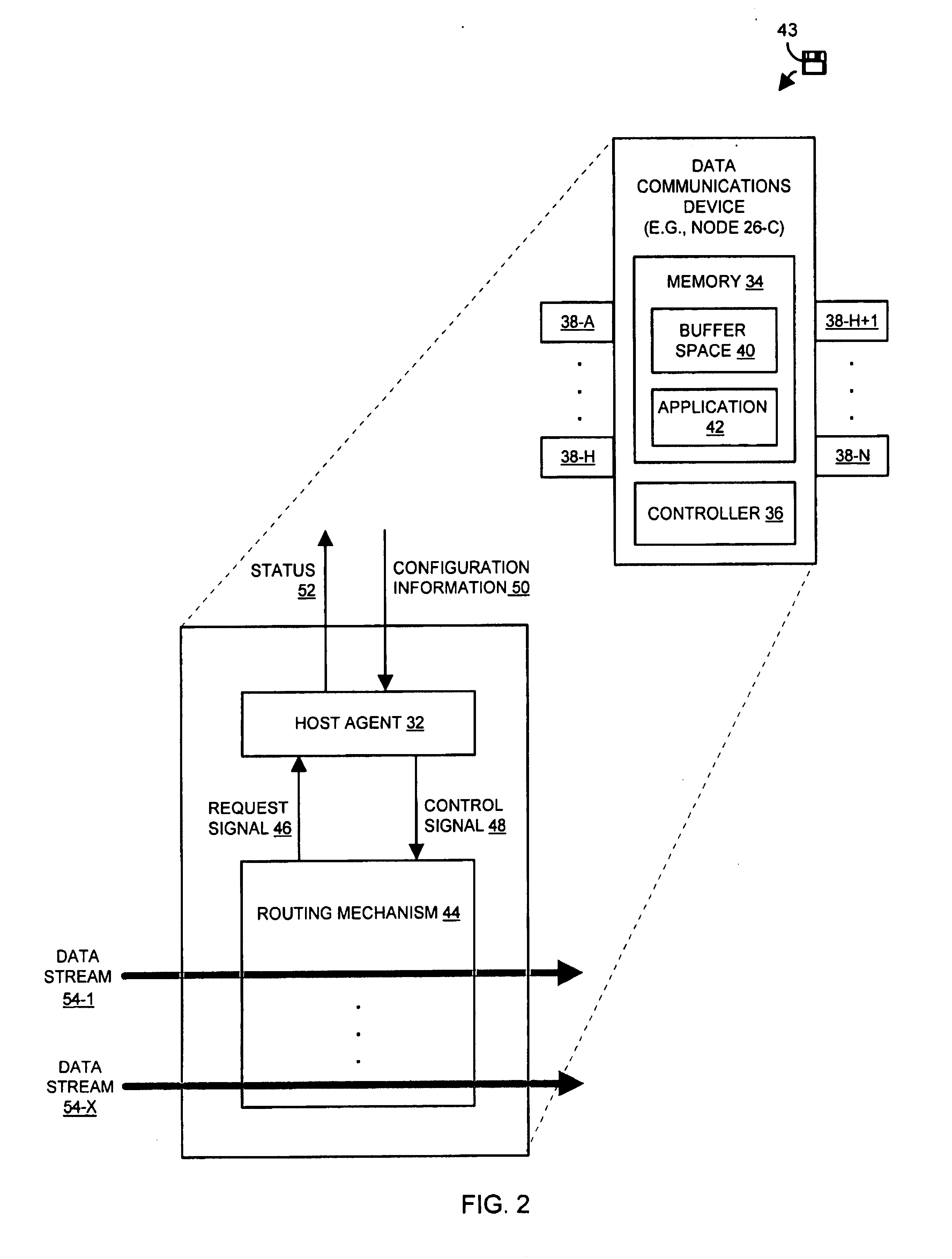Methods and apparatus for controlling a data stream using a host agent acting on behalf of a host computer
a technology of host computers and data streams, applied in the field of methods and apparatus for controlling a data stream using a host computer acting on behalf of the host computer, can solve problems such as network traffic that can interfere with the data stream, delay the transfer of buffered packets, and certain drawbacks of communication between the nodes and hosts
- Summary
- Abstract
- Description
- Claims
- Application Information
AI Technical Summary
Benefits of technology
Problems solved by technology
Method used
Image
Examples
Embodiment Construction
[0027]The invention is directed to techniques for controlling a data stream in a data communications device using a host agent which acts on behalf of a host computer. The host agent provides control information in a control signal in response to a request signal sent from the data communications device to a host computer. The data communications device uses the control information to individually control a data stream among multiple data streams. Accordingly, communication from the host computer to the data communications device in response to the request signal is unnecessary thus saving host computer resources and minimizing network traffic. Such techniques may be employed in data communications devices and other computerized devices such as those manufactured by Cisco Systems, Inc. of San Jose, Calif.
[0028]FIG. 1 shows a network 20 that is suitable for use by the invention. The network 20 includes a sending host computer 22 (i.e., a data stream source), a receiving host computer...
PUM
 Login to View More
Login to View More Abstract
Description
Claims
Application Information
 Login to View More
Login to View More - R&D
- Intellectual Property
- Life Sciences
- Materials
- Tech Scout
- Unparalleled Data Quality
- Higher Quality Content
- 60% Fewer Hallucinations
Browse by: Latest US Patents, China's latest patents, Technical Efficacy Thesaurus, Application Domain, Technology Topic, Popular Technical Reports.
© 2025 PatSnap. All rights reserved.Legal|Privacy policy|Modern Slavery Act Transparency Statement|Sitemap|About US| Contact US: help@patsnap.com



